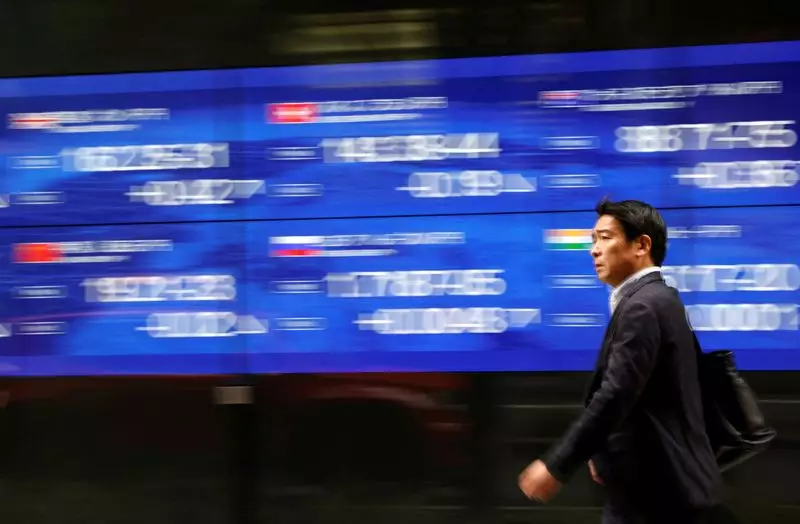In the ever-shifting landscape of global finance, political developments often act as catalysts for market movements. Recently, the euro experienced a notable decline, primarily influenced by heightened political uncertainty in France. The specter of a potential government collapse has exacerbated investor anxieties, while the resurgence of technology stocks has buoyed global market performance. As we navigate this tumultuous environment, the market’s response to U.S. interest rate policies remains a focal point for traders and analysts alike.
The current state of the eurozone is increasingly precarious, particularly in light of events unfolding in France. Recent statements from far-right political figures have foreshadowed the likelihood of a no-confidence vote against Prime Minister Michel Barnier’s government, should substantial budget concessions not be forthcoming. This situation casts a shadow over the euro, which had seen better days; it dropped as much as 0.57% against the dollar, reaching $1.05155 after having previously expressed some resilience earlier in the month.
The implications of a faltering French government on the euro cannot be understated. Analysts predict that a fall of Barnier’s administration could rekindle selling pressure on the euro, not just against the dollar but also against other currencies such as the Swiss Franc. With the stakes this high, traders are left watching with bated breath, eager to discern the outcomes of both political maneuvers and monetary policy decisions that may shape the coming weeks.
As political volatility simmers in Europe, attention shifts to the Federal Reserve and its forthcoming strategies. Market participants are keenly interested in the Fed’s decisions on interest rates, particularly in light of the labor market’s monthly payroll report set for release. An anticipated cut in interest rates from the Federal Reserve could invigorate both traders and the broader market, prompting some analysts to speculate about the potential for a ‘Santa Rally’—a term used to describe a year-end surge in stock prices.
Expectations are high that a dovish stance from Fed Chair Jerome Powell and other officials could create a favorable environment for the dollar. Currently, the dollar index is showing strength, rising approximately 0.24% and reflecting a broader appeal against major global currencies. As the U.S. continues to navigate its economic landscape, it remains crucial for investors to stay vigilant concerning potential shifts in monetary policy that could profoundly affect currency valuations.
Despite the political and economic uncertainties, tech stocks have provided a contrasting narrative by lifting global share markets. Such resilience is notable amidst otherwise challenging market conditions. In Asia, positive manufacturing data in China has further set a buoyant tone, with stock indices reflecting minor gains—evidence that specific sectors can thrive even amid broader geopolitical tensions.
The S&P 500 and Nasdaq recently posted impressive gains, closing at record highs and illustrating investor confidence in the technology sector’s resilience to external pressures. As market participants dissect these trends, they must analyze not only macroeconomic indicators but also sector-specific developments that may provide lucrative opportunities in an intricate marketplace.
Beyond equities and currencies, commodities such as oil and gold are also subject to market influences. Oil prices are responding to a mix of data and geopolitical developments, notably rising on the back of Chinese manufacturing reports. Meanwhile, tensions in the Middle East further complicate the oil price landscape, emphasizing the interplay between global politics and commodities trading.
Gold, traditionally viewed as a safe haven, has struggled recently, reflecting a pullback attributed to a robust dollar and broader market dynamics. The metal saw a significant decline, marking its poorest monthly performance in several months. Conversely, cryptocurrencies have experienced newfound vigor, with ether and Bitcoin trading at near record highs, underscoring a shift in investment appetites amid traditional financial market turmoil.
As we consider the intricate tapestry of factors shaping market dynamics, it becomes evident that both political volatility and economic indicators will continue to exert their influence. From the potential fallout in France to the pivotal decisions of the U.S. Federal Reserve, the landscape remains fraught with uncertainties and opportunities. As investors and analysts monitor these developments, understanding the broader implications of political and economic shifts will be essential for navigating the complexities of global markets in the coming weeks.

